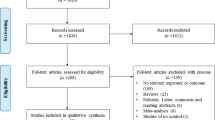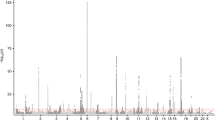Abstract
Background and Objectives
Genetic studies have revealed that the regulated upon activation normal T-cell expressed and secreted (RANTES) −28C/G and −403G/A polymorphisms are associated with asthma risk, but contradictory findings have also been reported. Therefore, we undertook a meta-analysis on this topic.
Methods
The PubMed, Web of Science, China National Knowledge Infrastructure (CNKI), and Wanfang databases were used to identify relevant studies published in the medical literature from 1990 to March 26, 2014. Nine studies (containing 2,103 cases and 2,876 controls) investigated the −28C/G polymorphism, and 11 studies (including 2,015 cases and 1,909 controls) assessed the −403G/A polymorphism.
Results
The pooled results demonstrated that the −28C/G polymorphism was not associated with asthma risk in the overall populations (Caucasians, Asians, and a mixed population). However, in subgroup analysis according to age, the −28G allele was associated with an increased risk of asthma in children (odds ratio [OR] 1.27, 95 % confidence interval [CI] 1.03–1.57, P value for heterogeneity [P het] = 0.163, P value for the overall effect [P z] = 0.028). When we further stratified the studies performed in children on the basis of ethnicity, we found that the −28G allele was associated with an increased risk of asthma in Asian children (OR 1.28, 95 % CI 1.02–1.62, P het = 0.127, P z = 0.035), but not in Caucasian children (OR 1.20, 95 % CI 0.68–2.12, P het = 0.137, P z = 0.530). In subgroup analysis by asthma phenotype, no association between either atopic or non-atopic asthma and the −28C/G polymorphism was identified. For the −403G/A polymorphism, meta-analysis showed no association with asthma risk in the overall populations (Caucasians, Asians, and black people). In subgroup analyses by age, ethnicity, and asthma phenotype, we still did not find any association between the −403G/A polymorphism and asthma.
Conclusion
Current findings suggest an association between the −28G allele and asthma risk in Asian children but not in Caucasian children.




Similar content being viewed by others
References
Fireman P. Understanding asthma pathophysiology. Allergy Asthma Proc. 2003;24(2):79–83.
Zlotnik A, Yoshie O, Nomiyama H. The chemokine and chemokine receptor superfamilies and their molecular evolution. Genome Biol. 2006;7(12):243.
Garcia G, Godot V, Humbert M. New chemokine targets for asthma therapy. Curr Allergy Asthma Rep. 2005;5(2):155–60.
al Sharif F, Ollier WE, Hajeer AH. A rare polymorphism at position −28 in the human RANTES promoter. Eur J Immunogenet. 1999;26(5):373–4.
Hajeer AH, al Sharif F, Ollier WE. A polymorphism at position −403 in the human RANTES promoter. Eur J Immunogenet. 1999;26(5):375–6.
Zhang YG, Huang J, Zhang J, Li XB, He C, Xiao YL, Tian C, Wan H, Zhao YL, Tsewang YG, Fan H. RANTES gene polymorphisms and asthma risk: a meta-analysis. Arch Med Res. 2010;41(1):50–8.
Fang Q, Wang F, Zhao D. Association between regulated upon activation, normal T cells expressed and secreted (RANTES) −28C/G polymorphism and asthma risk—a meta-analysis. Int J Med Sci. 2010;7(1):55–61.
Li X, Zhang Y, Zhang J, Xiao Y, Huang J, Tian C, He C, Deng Y, Yang Y, Fan H. Asthma susceptible genes in Chinese population: a meta-analysis. Respir Res. 2010;11:129.
Lu YM, Cao LF, Li YQ, Li C. RANTES gene polymorphisms and risk of pediatric asthma: a meta-analysis. Exp Ther Med. 2012;4(5):918–22.
Mantel N, Haenszel W. Statistical aspects of the analysis of data from retrospective studies of disease. J Natl Cancer Inst. 1959;22(4):719–48.
DerSimonian R, Laird N. Meta-analysis in clinical trials. Control Clin Trials. 1986;7(3):177–88.
Liu CH, Chen H, Hu LP, Fu J, Zhang HQ, Zhang JL, Chen ZL, Chen YZ. Association between the genetic polymorphism of chemokine genes and asthma in Chinese children. Zhonghua Er Ke Za Zhi. 2005;43(6):462–3 (in Chinese).
Huo J, Liu QH, Hua L, Bao YX. Association of single nucleotide polymorphisms in RANTES and eotaxin-3 genes with childhood asthma. Shanghai Jiao Tong Da Xue Xue Bao (Yi Xue Ban). 2010;30(2):129–31 (in Chinese).
Al-Abdulhadi SA, Helms PJ, Main M, Smith O, Christie G. Preferential transmission and association of the −403 G–>A promoter RANTES polymorphism with atopic asthma. Genes Immun. 2005;6(1):24–30.
Lachheb J, Chelbi H, Hamzaoui K, Hamzaoui A. Association between RANTES polymorphisms and asthma severity among Tunisian children. Hum Immunol. 2007;68(8):675–80.
Huang JL. Asthma severity and genetics in Taiwan. J Microbiol Immunol Infect. 2005;38(3):158–63.
Tölgyesi G, Keszei M, Ungvári I, Nagy A, Falus A, Szalai C. Involvement of TNFalpha −308A promoter polymorphism in the development of asthma in children infected with Chlamydophila pneumoniae. Pediatr Res. 2006;60(5):543–8.
Fryer AA, Spiteri MA, Bianco A, Hepple M, Jones PW, Strange RC, Makki R, Tavernier G, Smilie FI, Custovic A, Woodcock AA, Ollier WE, Hajeer AH. The −403 G–>A promoter polymorphism in the RANTES gene is associated with atopy and asthma. Genes Immun. 2000;1(8):509–14.
Szalai C, Kozma GT, Nagy A, Bojszkó A, Krikovszky D, Szabó T, Falus A. Polymorphism in the gene regulatory region of MCP-1 is associated with asthma susceptibility and severity. J Allergy Clin Immunol. 2001;108(3):375–81.
Hizawa N, Yamaguchi E, Konno S, Tanino Y, Jinushi E, Nishimura M. A functional polymorphism in the RANTES gene promoter is associated with the development of late-onset asthma. Am J Respir Crit Care Med. 2002;166(5):686–90.
Yao TC, Kuo ML, See LC, Chen LC, Yan DC, Ou LS, Shaw CK, Huang JL. The RANTES promoter polymorphism: a genetic risk factor for near-fatal asthma in Chinese children. J Allergy Clin Immunol. 2003;111(6):1285–92.
Wang LJ, Li YR, Chen JH, Cui TP, Wu JM. Polymorphism of regulated upon activation, normal T cell expressed and secreted promoter region −28 position in Chinese allergic asthmatic children. Zhonghua Jie He He Hu Xi Za Zhi. 2004;27(6):394–7 (in Chinese).
Leung TF, Tang NL, Lam CW, Li AM, Fung SL, Chan IH, Wong GW. RANTES G-401A polymorphism is associated with allergen sensitization and FEV1 in Chinese children. Respir Med. 2005;99(2):216–9.
Liu M, Li HL, Huang YK, Chen YH, Liu H, Jin P. The SNPs of chemokine RANTES promoter in children with asthma. Zhongguo You Sheng Yu Yi Chuan Za Zhi. 2005;13(11):20–3.
Moissidis I, Chinoy B, Yanamandra K, Napper D, Thurmon T, Bocchini J Jr, Bahna SL. Association of IL-13, RANTES, and leukotriene C4 synthase gene promoter polymorphisms with asthma and/or atopy in African Americans. Genet Med. 2005;7(6):406–10.
Sohn MH, Kim SH, Kim KW, Jee HM, Park HS, Kim KE. RANTES gene promoter polymorphisms are associated with bronchial hyperresponsiveness in Korean children with asthma. Lung. 2008;186(1):37–43.
Muro M, Marín L, Torio A, Pagan JA, Alvarez-López MR. CCL5/RANTES chemokine gene promoter polymorphisms are not associated with atopic and nonatopic asthma in a Spanish population. Int J Immunogenet. 2008;35(1):19–23.
Murk W, Walsh K, Hsu LI, Zhao L, Bracken MB, Dewan AT. Attempted replication of 50 reported asthma risk genes identifies a SNP in RAD50 as associated with childhood atopic asthma. Hum Hered. 2011;71(2):97–105.
Nahas R, Fakhoury HM, Chmaisse HN, Makki RF. Study of the association between −403G/A and −28C/G RANTES gene polymorphisms and asthma in Lebanon. Ann Thorac Med. 2012;7(1):16–20.
Kaneko Y, Masuko H, Sakamoto T, Iijima H, Naito T, Yatagai Y, Yamada H, Konno S, Nishimura M, Noguchi E, Hizawa N. Asthma phenotypes in Japanese adults—their associations with the CCL5 and ADRB2 genotypes. Allergol Int. 2013;62(1):113–21.
Liu Q, Hua L, Fang D, Lin Q, Zhu Y, Gan X, Bao Y. Interleukin-13 and RANTES polymorphisms in relation to asthma in children of Chinese Han nationality. Asian Pac J Allergy Immunol. 2013;31(3):247–52.
Lukacs NW1, Standiford TJ, Chensue SW, Kunkel RG, Strieter RM, Kunkel SL. C-C chemokine-induced eosinophil chemotaxis during allergic airway inflammation. J Leukoc Biol. 1996;60(5):573–8.
Pan ZZ, Parkyn L, Ray A, Ray P. Inducible lung-specific expression of RANTES: preferential recruitment of neutrophils. Am J Physiol Lung Cell Mol Physiol. 2000;279(4):L658–66.
John AE, Berlin AA, Lukacs NW. Respiratory syncytial virus-induced CCL5/RANTES contributes to exacerbation of allergic airway inflammation. Eur J Immunol. 2003;33(6):1677–85.
Alam R, York J, Boyars M, Stafford S, Grant JA, Lee J, Forsythe P, Sim T, Ida N. Increased MCP-1, RANTES, and MIP-1alpha in bronchoalveolar lavage fluid of allergic asthmatic patients. Am J Respir Crit Care Med. 1996;153(4 Pt 1):1398–404.
Chihara J1, Yasuba H, Tsuda A, Urayama O, Saito N, Honda K, Kayaba H, Yamashita T, Kurimoto F, Yamada H. Elevation of the plasma level of RANTES during asthma attacks. J Allergy Clin Immunol. 1997;100(6 Pt 2):S52–5.
Acknowledgments
This work was supported in part by a research grant (No. 2013GXNFAA019206) from the Natural Science Foundation of Guangxi Zhuang Autonomous Zone, P. R. China. The funding sources had no role in the study design; the collection, analysis, and interpretation of data; the writing of the report; or the decision to submit the article for publication.
Conflicts of interest
The authors declare no competing interests.
Author information
Authors and Affiliations
Corresponding author
Additional information
Z.-K. Xie and H. Zhao contributed equally to this research.
Rights and permissions
About this article
Cite this article
Xie, ZK., Zhao, H., Huang, J. et al. The Regulated upon Activation Normal T-cell Expressed and Secreted (RANTES) −28C/G and −403G/A Polymorphisms and Asthma Risk: A Meta-analysis. Mol Diagn Ther 18, 523–531 (2014). https://doi.org/10.1007/s40291-014-0112-5
Published:
Issue Date:
DOI: https://doi.org/10.1007/s40291-014-0112-5




